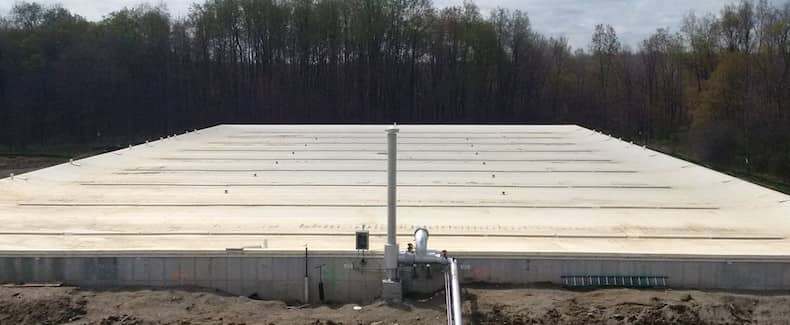 Design and industrial engineers rely on geomembranes to withstand the harshest conditions in a broad range of applications. They must be made of durable and chemically resistant materials to be able to optimally function as pond liners, floating covers, wastewater baffles and secondary containment—or to be used in other applications that require a long-lasting and impenetrable, yet flexible barrier.
Design and industrial engineers rely on geomembranes to withstand the harshest conditions in a broad range of applications. They must be made of durable and chemically resistant materials to be able to optimally function as pond liners, floating covers, wastewater baffles and secondary containment—or to be used in other applications that require a long-lasting and impenetrable, yet flexible barrier.
Over the past half-century or longer, experienced geomembrane manufacturers have taken durability to a new level using coated-fabric technology to develop membranes that withstand the effects of alkalis, acids, oils and other potentially corrosive materials. These membranes even have superior resistance to UV rays, excellent tensile strength and minimal expansion or contraction potential.
Cheesemaker Shows Further Commitment to Environment
To more clearly understand the quality and adaptability of these innovative geomembranes, consider a real-life challenge faced by an award-winning cheese manufacturer based in the United States.
The cheesemaker is committed to environmental responsibility, sustainability and innovation. It recycled byproducts and, in fact, had already been handling the factory’s wastewater in a responsible manner.
However, the company felt that just meeting the minimum requirements wasn’t enough. To find an even more eco-friendly way to recycle its wastewater output, the cheesemaker’s management team wanted to anaerobically treat its wastewater.
Developing an Impactful Solution
ADI Systems designs and implements wastewater treatment and waste-to-energy solutions for industrial processors. ADI Systems recommended a custom-designed ADI-BVF® to meet the cheesemaker’s needs. This system treats wastewater that contains concentrations of solids, whey, fats and oils that are typical in cheese production.
After production, the wastewater is discharged into a downstream membrane bioreactor (MBR). The BVF® reactor has proven to be a highly efficient dairy wastewater system that works even at lower-than-optimal temperatures.
The Crucial Role of a Durable Geomembrane
In this instance, the BVF® reactor had a combination earthen and concrete structure, and the contents needed to be sealed to prevent leakage into the soil or emissions from escaping into the atmosphere. Only the strongest, least-permeable and flexible materials are capable of performing as the permanent liner and floating cover required for this system.
The best material to perform the function of completely sealing the outflow of wastewater was chosen. XR® Geomembrane’s Black 8138 XR-5 Geomembrane was selected as the liner for the BVF® system, and the Cream/Black XR-5 material was chosen for the protective cover for the system.
Information in this article is based off content from Water and Wastes Digest.




